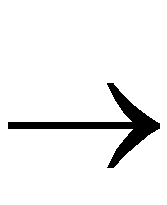FPGA Editor GuideChapter 5: Working with Physical Macros
Placing and Unplacing Macros in Your Design
Macros can be placed in the Array window either automatically or manually. When you use automatic placement (AutoPlace), the system selects an appropriate site or sites for each macro you select. When you use manual placement, you select both a macro and a site in which to place the macro's reference component.
When you manually place a macro, you only place the pre-placed components in the macro (those components that were placed in the macro library file defining this macro instance). You must place any unplaced components in the macro's library file in a separate operation. When you automatically place a macro, the system tries to place all of the macro components, whether they are pre-placed or not.
You can also unplace macros. Unplacing a macro unroutes each of the macro's external pins, removes the macro from the Array window, and adds the macro to the list of your design's unplaced macros.
AutoPlacing Macros
You can place macros automatically with the Auto Place command.
- Display a list of unplaced macros in the List window.
- Select the macros to automatically place.
- Select Tools
 Place
Place  Auto Place.
Auto Place.
The macros you selected are automatically placed in vacant sites in the Array window. For each macro, any connections that were unrouted in the macro's library file are routed when the macro is placed.
If the Automatic Routing Option is On, each macro's external pins are routed after the macro is placed. Also, any non-prerouted macro nets are automatically routed.
Manually Placing Macros
There are two macro manual placement procedures.
- Manually placing an unplaced macro in a vacant site.
- Moving a macro to another site after it has been placed.
To manually place an unplaced macro, follow this procedure.
- Display a list of unplaced macros in the List window.
- Select one name from the list of unplaced macros.
- Select a vacant site in the Array window in which to place the macro's reference component.
The macro's reference component and the selected site must be the same type of block (I/O component and I/O component or logic component and logic component).
- Select Tools
 Place
Place  Manual Place.
Manual Place.
The macro's reference component is placed in the selected site, and all of the macro's pre-placed components (components placed in the macro's library file) are placed in sites relative to the reference component. Macro components that are not pre-placed must be placed in a separate operation.
Any connections that were routed in the macro's library file are routed when the macro is placed. If the Automatic Routing Option is On, the macro's external pins are routed after the macro is placed. Also, any non-prerouted macro nets are automatically routed.
Unplacing
The Unplace command removes selected macros from their current sites and puts them into the unplaced macros list. The list of unplaced macros can be viewed in the List window. Unplaced macros can be re-placed. Before unplacing a macro, the system unroutes each external pin on the macro.
Note: Locked macros cannot be unplaced.
To unplace selected macros, follow this procedure.
- Select the macros to unplace in the List window.
- Select Tools
 Unplace.
Unplace.
All of the selected macros are unplaced.